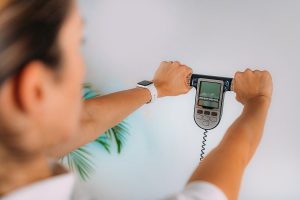Medically supervised exercise programs can do heart patients a lot of good, but few people of color take part in them — regardless of income, new research finds.
The study, of more than 100,000 U.S. patients, found that while all were eligible for cardiac rehabilitation, only about one-quarter actually attended. Enrollment was particularly low among Asian, Black and Hispanic patients, including those with high incomes.
Researchers called the persistent disparities “disappointing,” especially since cardiac rehab can have major benefits, including a longer life.
Cardiac rehab is considered a standard of care for patients recovering from a heart attack or heart procedure, and for those with certain chronic conditions such as heart failure and chest pain caused by clogged heart arteries.
Supervised exercise is the cornerstone, but programs also offer counseling on diet, smoking cessation and the psychological aspects of heart disease, including depression and anxiety.
Yet for years, studies have shown that few eligible patients actually enroll in cardiac rehab.
The new study, published June 22 in the Journal of the American Heart Association, is no exception.
It found that of over 107,000 eligible patients, only about 26% attended at least one cardiac rehab session. Rates were especially low among Asian, Black and Hispanic patients, who were anywhere from 19% to 43% less likely to attend than white patients were.
What was striking, researchers found, was that higher income did not narrow that gap. Higher-income people of all races did enroll in cardiac rehab more often than lower-income patients did.
But even among those with household incomes topping $100,000, racial disparities remained. At that income level, 40% of white patients attended, versus 27% to 33% of people of color.
“It’s disappointing,” said lead researcher Dr. Jared Magnani, an associate professor of cardiology at the University of Pittsburgh.
The study cannot show why the disparities were so stubborn, but there are likely many reasons, Magnani said.
Patients can face numerous obstacles in attending cardiac rehab — which typically involves three sessions a week for 12 weeks. The time commitment alone, plus the need for reliable transportation, can be too much for many people, Magnani pointed out.
And in some areas of the country, he said, there may be no cardiac rehab facility within a reasonable driving distance.
Dr. Todd Brown, a cardiologist and associate professor at the University of Alabama at Birmingham, agreed that cardiac rehab can be a “big ask” of patients.
Besides the logistics, Brown said, money can be an issue even for people with insurance, because some plans require substantial copays.
With all those obstacles, patients need a lot of motivation to attend — yet they may not always understand the full benefits of cardiac rehab, said Brown.
Many patients receive information on it while they are in the hospital recovering from a heart attack or cardiac procedure.
“If you’re in the hospital, you’re being bombarded with information,” Brown said. “I think that for most patients, it’s overwhelming.”
He speculated that communication might be one factor in racial disparities in cardiac care, too. “Maybe we’re not delivering the information in a culturally appropriate way,” Brown said.
A key message for patients is that cardiac rehab can “help you live longer, feel better, and keep you out of the hospital,” he said.
“A lot of patients think it’s just exercise and they can do it on their own,” Brown noted. But, he said, it’s the supervision, and the help with lifestyle and mental health, that makes cardiac rehab effective.
Making sure patients understand the benefits of cardiac rehab is key, agreed Dr. Karen Aspry, a member of the American College of Cardiology’s Prevention Cardiac Rehab Workgroup.
But she added that practical barriers have to be tackled. One way could be to make cardiac rehab centers more like a fitness center, with longer hours and opportunities for people to exercise on their own rather than in a class, Aspry said.
As for other solutions, Brown said that home-based cardiac rehab could be one. During the pandemic, Medicare rules were changed to allow reimbursement for cardiac rehab delivered online.
But that change is not permanent. Keeping it, and making online options available to privately insured patients, could improve access, Brown said.
There is also a bill before Congress that would authorize other medical professionals, including physician assistants and nurse practitioners, to supervise cardiac rehab. Right now, Brown said, a doctor has to be present when patients are exercising — which limits program hours and locations.
“We need the health care system to evolve,” Brown said, “to help us make cardiac rehab more patient-centered and accessible.
Aspry agreed that home-based cardiac rehab has the potential to help. “But you have to get payers to reimburse for it,” she said.
More information
The American Heart Association has more on cardiac rehab.
SOURCES: Jared Magnani, MD, MSc, associate professor, cardiology, Center for Research on Health Care, University of Pittsburgh.; Karen Aspry, MD, member, Prevention Cardiac Rehab Workgroup, American College of Cardiology, Washington, D.C.; Todd Brown, MD, associate professor, medicine, University of Alabama at Birmingham School of Medicine; Journal of the American Heart Association, June 22, 2022, online
Source: HealthDay
Copyright © 2025 HealthDay. All rights reserved.

















